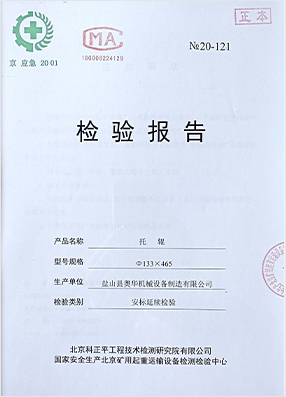 Afrikaans
Afrikaans  Albanian
Albanian  Amharic
Amharic  Arabic
Arabic  Armenian
Armenian  Azerbaijani
Azerbaijani  Basque
Basque  Belarusian
Belarusian  Bengali
Bengali  Bosnian
Bosnian  Bulgarian
Bulgarian  Catalan
Catalan  Cebuano
Cebuano  Corsican
Corsican  Croatian
Croatian  Czech
Czech  Danish
Danish  Dutch
Dutch  English
English  Esperanto
Esperanto  Estonian
Estonian  Finnish
Finnish  French
French  Frisian
Frisian  Galician
Galician  Georgian
Georgian  German
German  Greek
Greek  Gujarati
Gujarati  Haitian Creole
Haitian Creole  hausa
hausa  hawaiian
hawaiian  Hebrew
Hebrew  Hindi
Hindi  Miao
Miao  Hungarian
Hungarian  Icelandic
Icelandic  igbo
igbo  Indonesian
Indonesian  irish
irish  Italian
Italian  Japanese
Japanese  Javanese
Javanese  Kannada
Kannada  kazakh
kazakh  Khmer
Khmer  Rwandese
Rwandese  Korean
Korean  Kurdish
Kurdish  Kyrgyz
Kyrgyz  Lao
Lao  Latin
Latin  Latvian
Latvian  Lithuanian
Lithuanian  Luxembourgish
Luxembourgish  Macedonian
Macedonian  Malgashi
Malgashi  Malay
Malay  Malayalam
Malayalam  Maltese
Maltese  Maori
Maori  Marathi
Marathi  Mongolian
Mongolian  Myanmar
Myanmar  Nepali
Nepali  Norwegian
Norwegian  Norwegian
Norwegian  Occitan
Occitan  Pashto
Pashto  Persian
Persian  Polish
Polish  Portuguese
Portuguese  Punjabi
Punjabi  Romanian
Romanian  Russian
Russian  Samoan
Samoan  Scottish Gaelic
Scottish Gaelic  Serbian
Serbian  Sesotho
Sesotho  Shona
Shona  Sindhi
Sindhi  Sinhala
Sinhala  Slovak
Slovak  Slovenian
Slovenian  Somali
Somali  Spanish
Spanish  Sundanese
Sundanese  Swahili
Swahili  Swedish
Swedish  Tagalog
Tagalog  Tajik
Tajik  Tamil
Tamil  Tatar
Tatar  Telugu
Telugu  Thai
Thai  Turkish
Turkish  Turkmen
Turkmen  Ukrainian
Ukrainian  Urdu
Urdu  Uighur
Uighur  Uzbek
Uzbek  Vietnamese
Vietnamese  Welsh
Welsh  Bantu
Bantu  Yiddish
Yiddish  Yoruba
Yoruba  Zulu
Zulu Exploring the Benefits and Applications of Vertical Roller Technology in Modern Industries
The Advancements and Applications of Vertical Roller Mills
Vertical roller mills (VRMs) have become increasingly significant in various industries, particularly in the field of material processing. These innovative machines offer a range of advantages over traditional milling equipment, making them a preferred choice for operations requiring high efficiency and precision. This article delves into the mechanics of vertical roller mills, their operational benefits, and their diverse applications.
Understanding Vertical Roller Mills
Vertical roller mills are characterized by a vertical design where the grinding table rotates while the grinding rollers crush the material. These machines are primarily used for grinding coal, cement, and various other materials. The design allows for a highly efficient grinding process, whereby the material is crushed between the rollers and the table, providing a larger surface area for material interaction and achieving more fine particles quickly.
One of the key components of a VRM is the hydraulic system that applies pressure to the grinding rollers. This pressure ensures that the material is adequately crushed and allows for adjustable settings to cater to different material characteristics and desired particle sizes. The integration of several functions, such as drying, grinding, and separating, in a single unit is another significant feature that enhances the VRM's efficiency.
Advantages of Vertical Roller Mills
One of the most notable advantages of VRMs is their energy efficiency. Compared to traditional ball mills, VRMs consume significantly less energy while achieving the same or even higher throughput levels. This reduction in energy consumption results in lower operational costs, making VRMs an economical option for businesses.
Another critical benefit is their ability to handle a variety of materials and fineness levels. VRMs can accommodate materials with different moisture content levels, making them versatile for different production processes. Additionally, the compact design of these mills requires less space and allows for easier integration into existing production lines.
vertical roller

Moreover, vertical roller mills produce less noise and dust compared to other grinding systems, contributing to a more environmentally friendly operation. The reduced dust emissions also enhance the workplace's safety conditions for operators, making VRMs a more attractive choice in industries aiming for sustainability.
Applications of Vertical Roller Mills
Vertical roller mills have found extensive applications across various sectors. The cement industry is one of the most prominent users, where VRMs are utilized for the production of both raw meal and cement. Their ability to finely grind and blend raw materials efficiently is key to producing high-quality cement with minimal energy expenditure.
In the coal industry, VRMs play a critical role in pulverizing coal for power generation. The precise control over the grinding process ensures that the coal is adequately processed for combustion, leading to enhanced efficiency in power plants.
Beyond cement and coal, vertical roller mills are increasingly used in industries such as minerals and metals processing, where they facilitate the production of fine powders required for various products. The pharmaceutical industry also employs VRMs for the milling of active ingredients, ensuring uniformity and quality in drug manufacturing.
Conclusion
The development and implementation of vertical roller mills have revolutionized the grinding process in numerous industries. Their efficiency, versatility, and cost-effectiveness underscore their importance in modern manufacturing operations. As industries continue to seek ways to optimize processes and reduce environmental impact, vertical roller mills are likely to play an even more prominent role in the future of material processing. With ongoing technological advancements, the capabilities of VRMs are expected to expand, further solidifying their position in the market.
-
Revolutionizing Conveyor Reliability with Advanced Rubber Lagging PulleysNewsJul.22,2025
-
Powering Precision and Durability with Expert Manufacturers of Conveyor ComponentsNewsJul.22,2025
-
Optimizing Conveyor Systems with Advanced Conveyor AccessoriesNewsJul.22,2025
-
Maximize Conveyor Efficiency with Quality Conveyor Idler PulleysNewsJul.22,2025
-
Future-Proof Your Conveyor System with High-Performance Polyurethane RollerNewsJul.22,2025
-
Driving Efficiency Forward with Quality Idlers and RollersNewsJul.22,2025





























